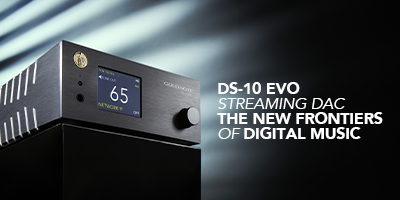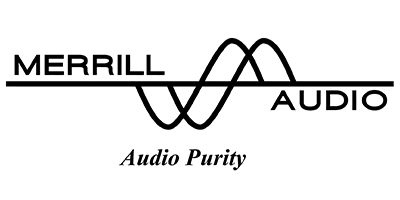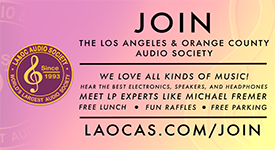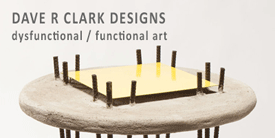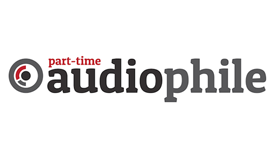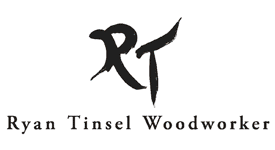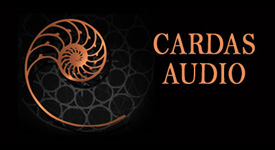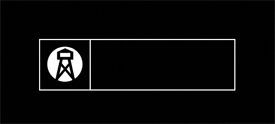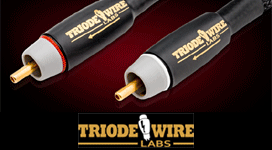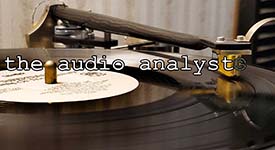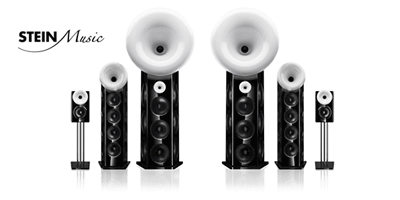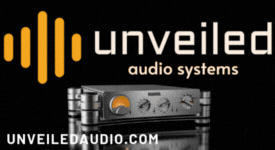In 1972, while a freshman in college, I decided I wanted a decent stereo system for myself and my dorm roommate. A local ham radio friend was selling a used Dynaco FM-3 stereo tuner, and a used Dynaco PAS-3X stereo preamplifier. I purchased them both for $50.00, but now I needed a power amplifier and a pair of loudspeakers. I bought a Dynaco Stereo-70 kit and assembled it, and then I purchased a pair of KLH-6Vs (“V” for the much less expensive vinyl-clad faux walnut contact paper finish) acoustic suspension speakers. Shortly thereafter, I added a Pioneer PL-15A belt-drive turntable with a Stanton moving-magnet cartridge. And so began my own journey into high-fidelity vacuum tube audio.
When I was a senior in college, I met a new resident in our dorm, who also had a Dynaco Stereo-70 amplifier as part of his system. Neil and I became close friends at this point, and he would frequently invite me to stay with him and his well-to-do parents at their home outside of Binghamton, NY, during weekends.
Neil’s Dad had this beautiful and very exotic-looking Marantz solid-state stereo receiver, and he was looking to upgrade his loudspeakers, so he solicited our opinion on what to buy while taking us to a local audio store in Binghamton. I had recently read about Paul Klipsch and his highly-regarded Klipschorns in an issue of Rolling Stone magazine, and this was going to be my first opportunity to actually hear them.
I was completely unprepared for the experience. To my ears, the Klipschorns did everything my KLH-6Vs and my folk’s AR-2As could not. Powerful, natural sounding, and clean articulated deep bass, with incredible dynamics and clarity. This was my first exposure to horn-loaded speakers intended for home use, and I knew that going forward, I had to have them.
Later, the ballroom at my college installed a number of Altec-Lansing Voice of the Theatre A7-500 speakers. I marveled at the sound of them as well, but they could not quite compare with the reproduction of the sense of scale, the delivery of the lowest octave of bass, and the clarity that seemed so effortless from the Klipschorns.

Bruce's Original Altec-Lansing 846A Valencias. My first horn-loaded speaker system (photo circa 1975).
Upon graduation from college, I began a search for a horn-loaded speaker system to replace my KLH-6Vs. While perusing the “Classified” section of the local newspaper, I found a pair of “Altec Voice of the Theatre” speakers for $400.00, around 30 miles from where I had been living at the time.
Upon arriving to look at them, I was disappointed to see that they were not the Voice of the Theatre A-7-series of speakers I remembered from college, but were instead a pair of absolutely pristine Altec 846A Valencias.
The owner was a German-born movie projectionist, and he swore they were absolutely the finest speakers made, since Altec made the speakers situated behind the screen at the movie theatre where he worked. The issue was that his wife thought they were too large for their apartment, so to keep the peace, he regretfully decided to offer them for sale.
I suggested that perhaps he would be interested in a partial trade of my KLH-6Vs. “Bring them over, and we’ll hook them up to my equipment”, he said. He liked them, and his wife liked them even more due to their manageable size, and the deal was struck: $200.00 plus my KLH-6Vs, and the Valencias were mine. Thank goodness for the ever-present Wife Acceptance Factor (WAF).
I borrowed my Dad’s station wagon, as there was no way the Valencias would fit within my 1967 VW Beetle, and brought them home.
For many years, I really enjoyed the sound of my Dynaco tube gear, my Pioneer PL-15A turntable, and the Altec 846A Valencias, until 1988, when a fellow ham radio buddy of mine sold me a pair of working Dynaco Mark IIIs for $10.00. (Yes, $10.00).
I put the Stereo-70 on the side, while I and my good audio buddy Tom Weiss tried every modification we could think of to the Mark IIIs, as he too owned a pair. They served as our test fixtures for new input and phase splitter circuits; class A self-bias operation of the push-pull 6550 output stage; controlled recovery silicon rectifiers to replace the GZ-34 vacuum tube rectifier; varied amounts of negative feedback; and a massive amount of filter capacitance at the output of the 475 VDC power supply, among other beneficial (and not so beneficial) sounding modifications we had implemented. It was a wonderful hands-on learning experience, and I began training my ears as to what great audio can really sound like.
The sound of these heavily-modified Mark IIIs was so much better than my Dynaco Stereo-70. And then along came a magazine known as “Sound Practices” in the late 1990s, which was about to change everything for me.
But first, I have to take a quick detour back in time, to 1976.
I had a summer job working as a service technician for the U.S.-based importer/distributor of a large Japanese consumer electronics company. Most of the technicians were from the factory in Yokohama, and one of them had a large number of “Stereo Technic” audio magazines, which catered to the Japanese do-it-yourself and high-end audio enthusiasts of the time.

From the August, 1973 Issue of Stereo Technic Magazine: A DIY WE-300B amplifier, various WE-300B amplifier schematics, and technical details on the WE-300B.
The magazine featured a multitude of home-brew and commercially-built amplifiers and their related schematics, many of which were comprised of circuits that were completely foreign to me, such as single-ended audio power amplifiers based upon the Western Electric 300B, the RCA 845, the GE 211/VT-4, and other Depression-era directly-heated triode power tubes from the 1930s.
Photos and block diagrams of all kinds of DIY systems with their Altec A-7 horn-loaded speaker systems, Garrard 301 turntables, and all kinds of vacuum tube amplifiers graced the pages of these magazines, and this Japanese fellow most graciously gave me a number of them, which I still have to this day.
Candidly, based upon the schematics and tube line-ups, I really thought the electrical designs of these amplifiers bordered on the ridiculous. They couldn’t possibly sound good. Push-pull EL-34s, KT-88s/6550s and EL-84s ruled the day in my world.
I described my stereo system to this Japanese technician, and in his best English, he most politely said the sonics from my Dynaco gear were “a simple sound”, but he was very enthusiastic about the Altec Valencias. At the time, I had no real idea what he meant about “simple sound”.
Much later, thanks to Sound Practices, and armed with my previous knowledge of WE-300Bs and other directly-heated triodes, and Japanese-style single-ended audio amplifiers, I was about to find out.
“Sound Practices” (SP) was the first time I had seen these kinds of amplifiers since my encounter with “Stereo Technic” magazine around 20 years earlier. Unlike Stereo Technic, Sound Practices was in English!
The “sound” of what I had previously assumed to be from these simple and ridiculous circuits were now clearly described by Joe Roberts, the editor and publisher of SP, and the other writers for the magazine.
These low-power, single-ended directly-heated triode amplifiers would be a great match for my Altec Valencias, with their 97.5 dB sensitivity. I now thought the sonic characteristics of these simple triode amplifiers would very possibly appeal to my taste. I had to give them a try.
So I rolled the dice and built a pair of the “Flesh and Blood” single-ended WE-300B amplifiers, as described by Herb Reichert in SP Issue No. 8.
I took the liberty of modifying Herb’s design, including a separate outboard power supply for each amplifier channel, with each power supply providing two separate HV/plate supplies; one for the WE-300B output stage, and one for the 6SN7 driver stage, along with some subtle changes to the driver stage, and the liberal use of oil and paper coupling, decoupling, and power supply filter capacitors. And I used the MagneQuest FS-030 single-ended output transformers, in place of the Tango units recommended by Herb.
As soon as the stylus hit the record, the sound of these amplifiers literally blew away my heavily modified Dynaco Mark IIIs. I never used them again.
I then decided to build up a line stage-only preamp, to replace my modified Dyna PAS-3X preamp. This new preamp utilized a 76 triode, directly coupled to one-half of a 6SN7 configured as a cathode follower output stage, and a single 5R4GY rectifier tube.
I was so enamored with the sound of my WE-300B single-ended amplifiers and this 76/6SN7 preamp, that I reached out to Joe Roberts, and offered to write an article about this preamp. It subsequently appeared in SP issue no. 13.
A number of years later, Joe had mentioned to me that this preamp was the most popular DIY project to have appeared in the magazine. This made me very pleased, as so many audio enthusiasts around the world had first cut their DIY teeth building this simple-to-construct and great sounding line stage. 27 years later, it is still being built in the original version, or in versions similar to the original circuit.
One day, and on a whim, I decided to eliminate the two 6SN7 cathode follower output stages from this preamp, and replace them with a pair of test-clipped UTC A-25 plate-to-line transformers, which I happened to have on-hand in my junk box.
The sonic improvement was immediate and nothing less than shocking, with so much more clarity, vividness, color, and purity of the sound, attributes which I always really valued.
Later, I replaced the A-25s with a pair of Tango NP-8s, and the sound quality was even better.
That marked the end of my use of cathode follower circuits, and the beginning of a long path of experimenting with and building various transformer-coupled power amplifier and preamplifier designs.
Sound Practices also published an earlier article (SP issue no. 11) by John Stronczer, about his experiences with the Jean Hiraga-modified Altec A-5 Voice of the Theatre speaker system. It completely captured my interest and imagination, as this would be a logical step-up and improvement from my beloved Altec Valencias.
It took a number of months to build my A-5s. First, I was incredibly fortunate to find a local pair of new-in-box Altec 828 bass enclosures, which I modified to improve the damping of the short horn and other deficiencies of the design.
Then I found a pair of blown-up Altec 416-8A bass drivers with Altec 511B horns and 802 compression drivers at a local electronics surplus joint. I sold off the 511Bs and the 802 drivers, which paid for the cost of sending the 416-8As back to Altec for re-coning and re-magnetizing.
I sourced a local pair of Altec 1505B 15-cell multicellular horns; I traded a couple of new-in-box Western Electric 422A rectifier tubes and $200.00 cash for them.
Finding the Altec 30166 single-driver throats for the 1505Bs was another story, but eventually a fellow horn enthusiast in Michigan sympathized with me, and somewhat reluctantly provided a pair.
Lastly, a good friend of mine found four used Altec 288H-8 Alnico compression drivers with blown diaphragms; I purchased a pair of them from him, and I replaced the diaphragms with original Altec parts.
I then built the Jean Hiraga-designed HF and LF crossover networks to the schematics published in John Stronczer’s SP article, using oil and paper capacitors, Alpha Core copper foil inductors, and non-inductive wire-wound resistors. Upon completion, I was so impressed by the sonics of the A-5s, that a few weeks later, as good sounding as they were, my much-loved Valencias went up for sale. I think they now reside in Hong Kong.
27 years later, my A-5s are the only part of my entire audio system that have remained unchanged and a constant. I love their sound. They are now complemented by a JBL 4645C cinema subwoofer, with an 18-inch driver.
Around 1998, I was given a Rek-O-Kut Model B-16H 16-inch idler-drive turntable. Reading about the sonic merits of idler-drive turntables in SP, I decided to give this late 1950s beast a listen. Even with a cheap Shure moving-magnet cartridge, and a crappy homemade plywood plinth, it did many things “right”.
I sold my Absolute Sound-endorsed SOTA Sapphire turntable with its SME-V arm, and decided to take the plunge with an EMT 930st idler-drive turntable. I’m glad I did.
Later, I upgraded to the EMT 927A st, which is the 16-inch version of the venerable 930st turntable, which is what I am using now. The 930st went to a really great guy in Montreal, who loves it.
Please click on the link below to go the next page.

